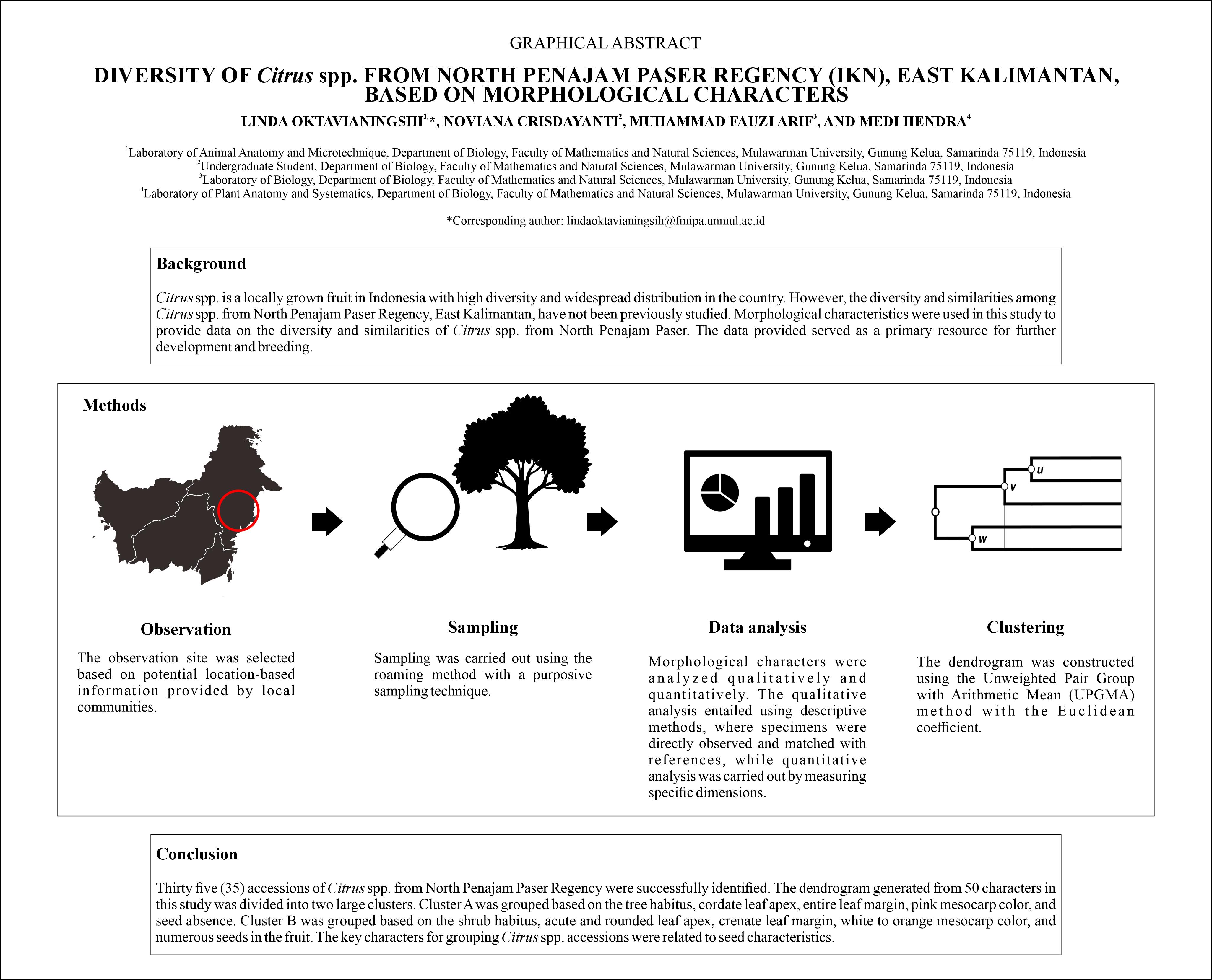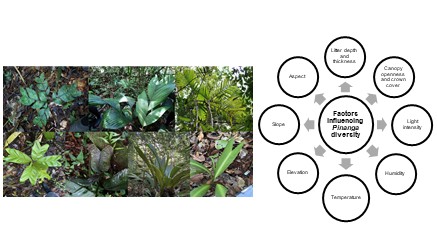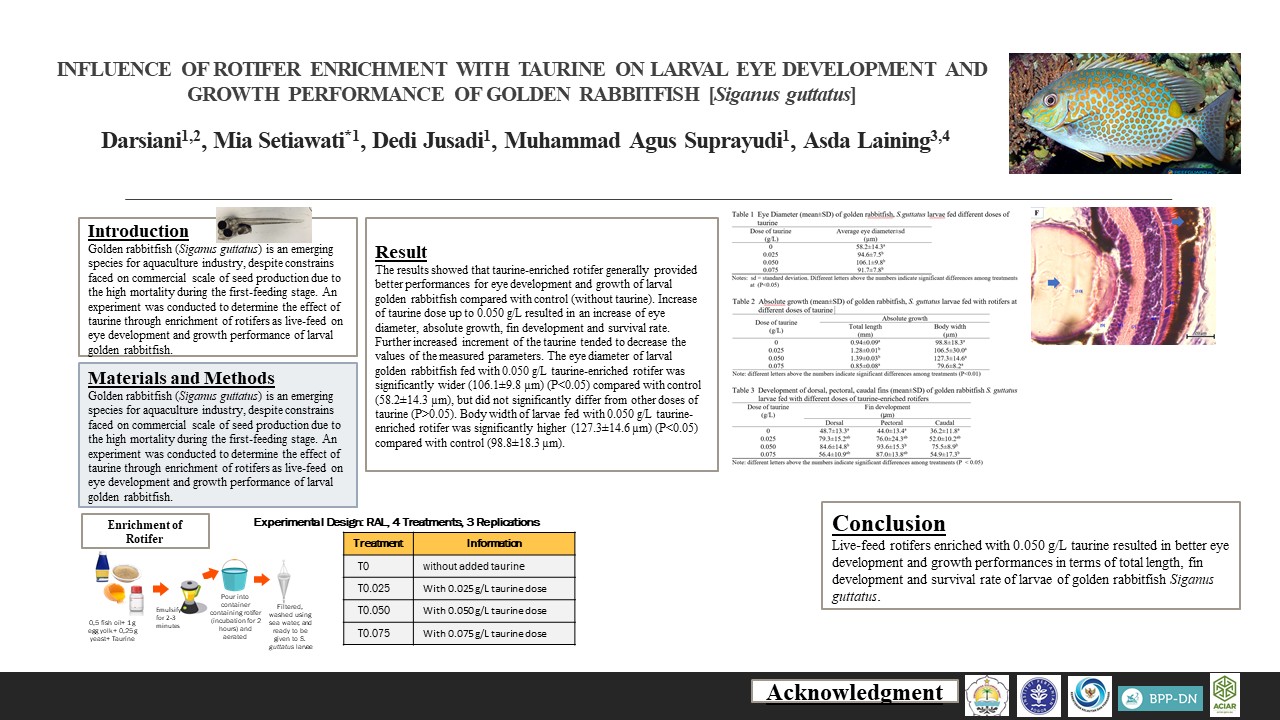FLORA DIVERSITY, COMPOSITION AND ECOLOGY IN BESIQ BERMAI TROPICAL FOREST OF DAMAI DISTRICT, EAST KALIMANTAN
Downloads
Besiq Bermai Forest is part of Kalimantan forests known for vast plant diversity. The present study aimed to investigate flora diversity, composition, and ecology in Besiq Bermai Forest to support the management of biodiversity and forest conservation. Thirteen plots were established with different sizes of plots (100 m x 20 m plots for trees; 40 m x 5 m plots for saplings; and 5 m x 5 m plots for understory). Data recorded included plant species name and individual number of each plant species. Data analysed were Shannon-Wiener diversity index, Relative Density, Relative Frequency, Relative Dominance and Important Value Index. The principal component analysis (PCA) was performed to determine relationship between edaphic components and flora occurrence. The results showed that there were 93 species of trees (belonging to 48 genera and 22 families), 112 species of saplings (belonging to 62 genera and 43 families), and 48 species of understory (belonging to 28 genera and 20 families). Shannon-Wiener diversity index (H’) were 6.05, 6.25 and 3.26 for tree, saplings and understory, respectively. The most common family for tree and saplings in the forest ecosystem in this area was Dipterocarpaceae (Shorea spp). Species of tree with the highest importance value index were Dillenia excelsa, Syzygium sp. and Shorea parvifolia. The highest importance value index for species of saplings were Macaranga triloba and Shorea parvifolia; and for species of understory were Phrynium jagorianum. Ecological (edaphic) factors affecting the occurence and establishment of flora in Bermai forest were total N and C/N ratio. The present study has implication for the management of biodiversity and forest conservation.
Downloads
Authors who publish with this journal agree with the following terms:
- Authors retain copyright and grant the journal right of first publication, with the work 1 year after publication simultaneously licensed under a Creative Commons attribution-noncommerical-noderivates 4.0 International License that allows others to share, copy and redistribute the work in any medium or format, but only where the use is for non-commercial purposes and an acknowledgement of the work's authorship and initial publication in this journal is mentioned.
- Authors are able to enter into separate, additional contractual arrangements for the non-exclusive distribution of the journal's published version of the work (e.g., post it to an institutional repository or publish it in a book), with an acknowledgement of its initial publication in this journal.
- Authors are permitted and encouraged to post their work online (e.g., in institutional repositories or on their website) prior to and during the submission process, as it can lead to productive exchanges, as well as earlier and greater citation of published work (See The Effect of Open Access).



























